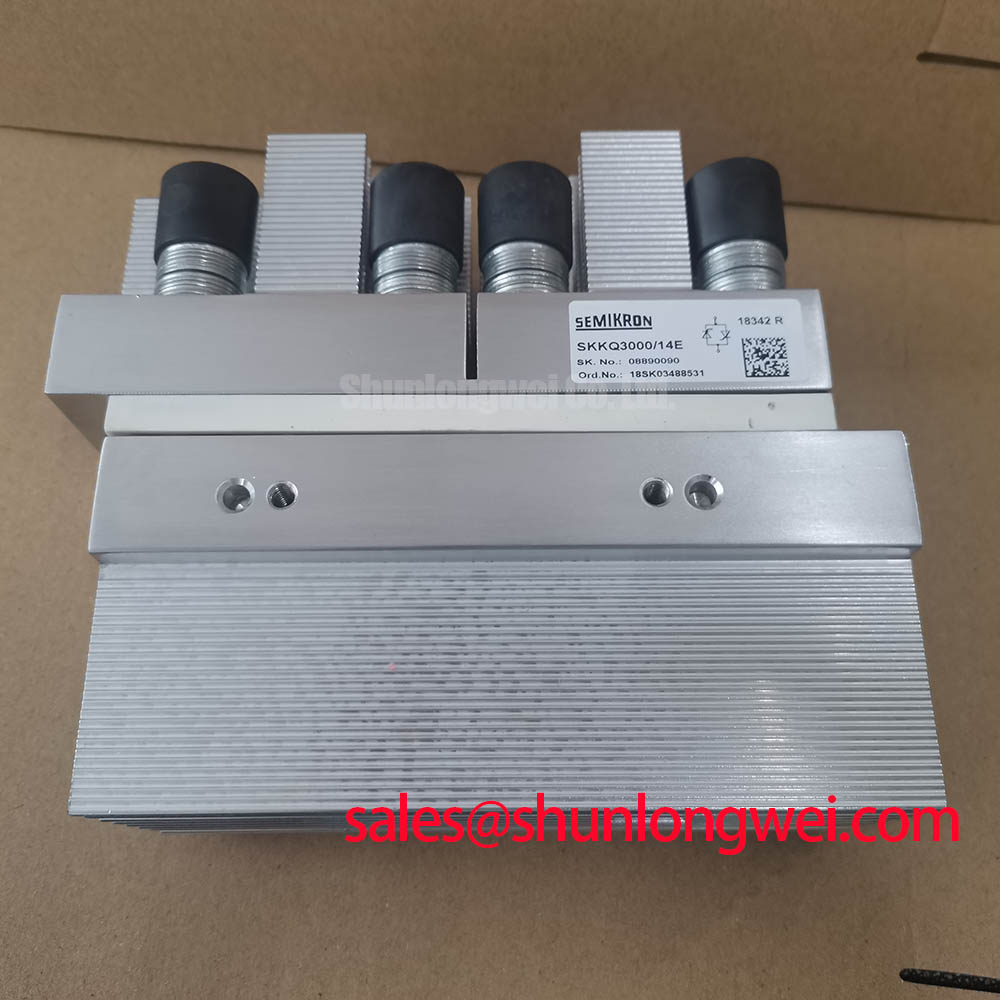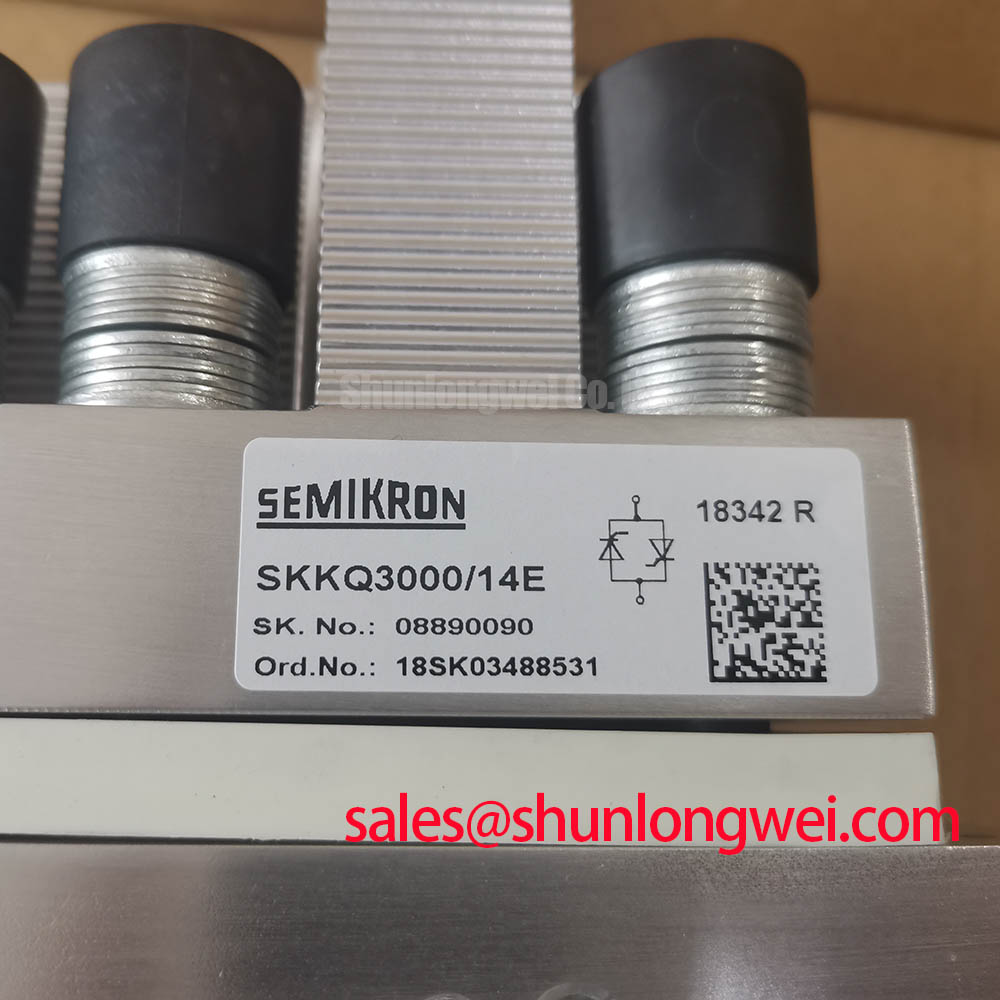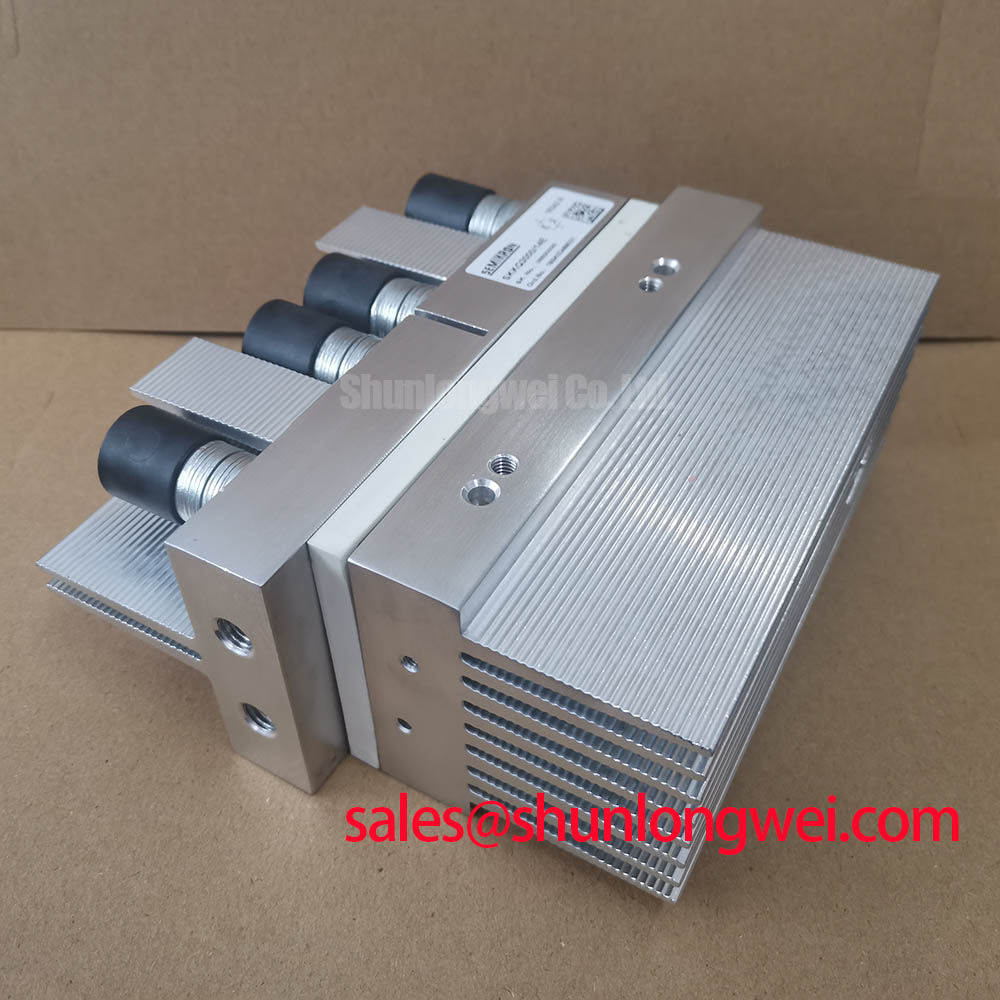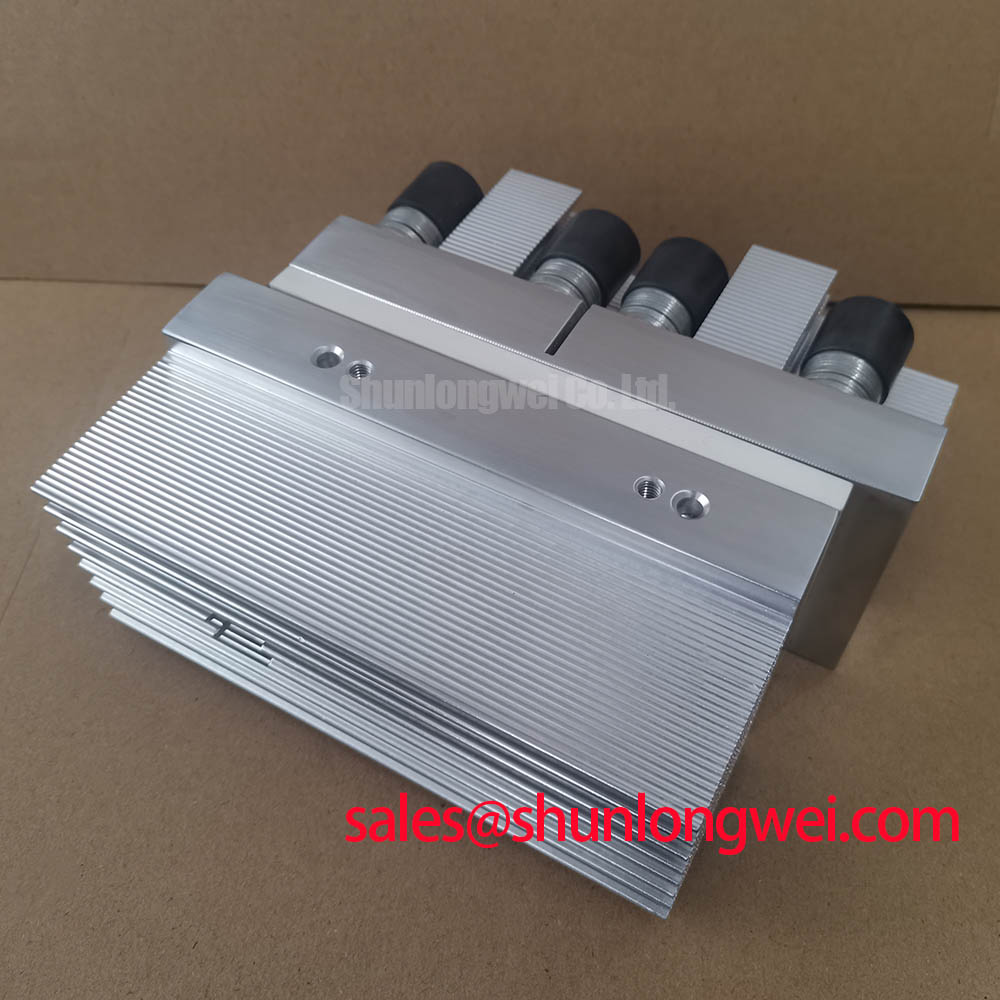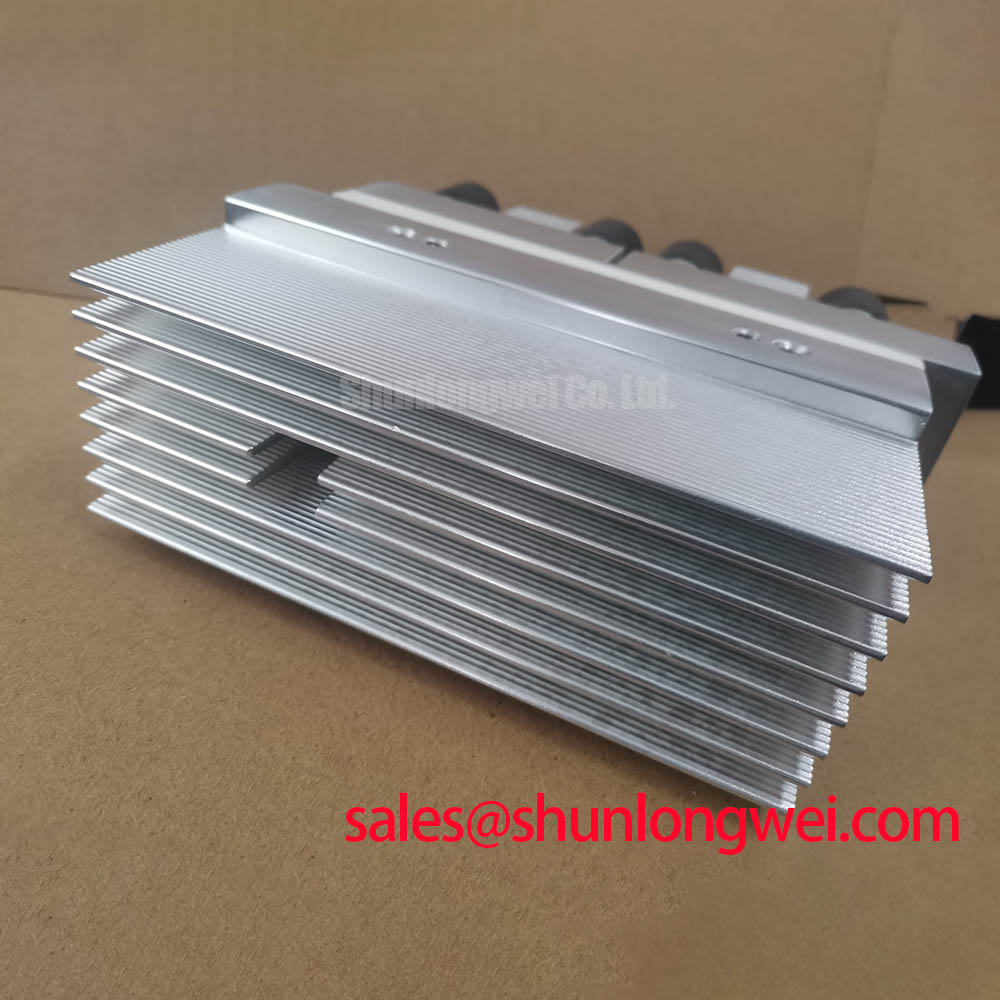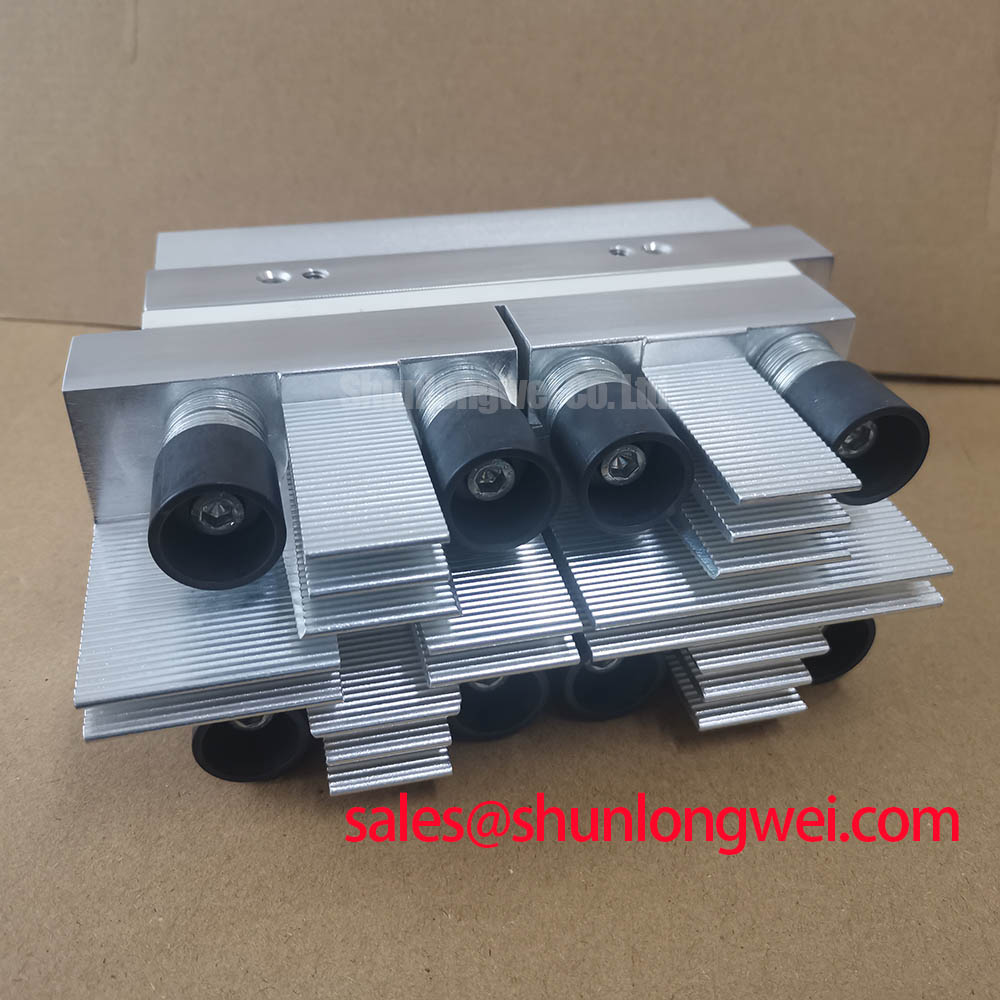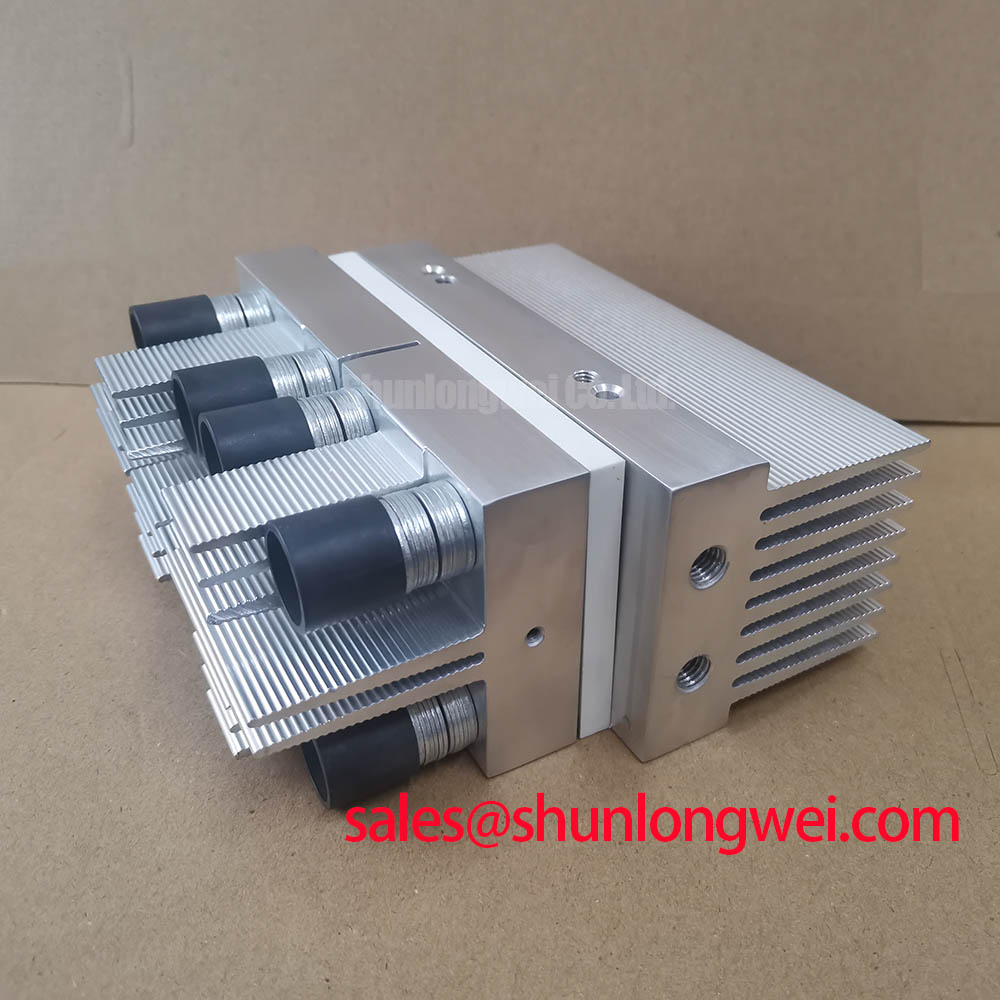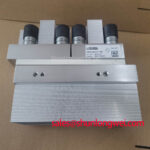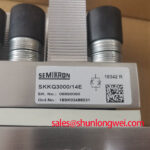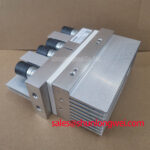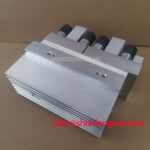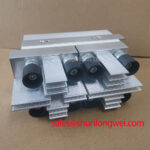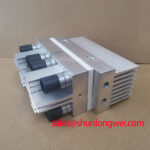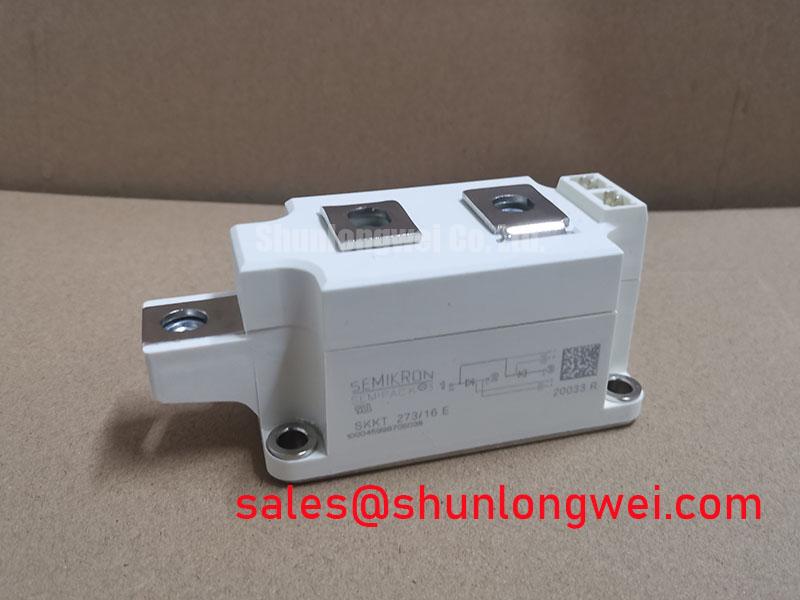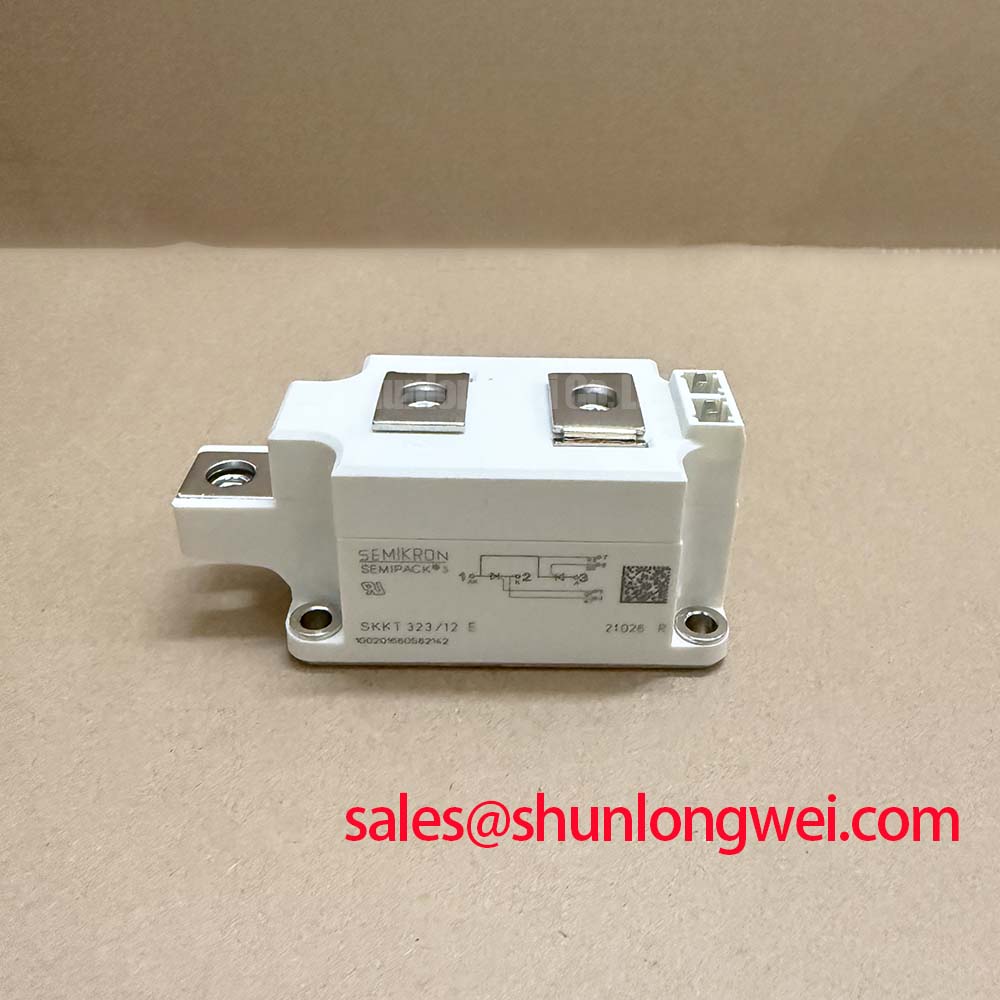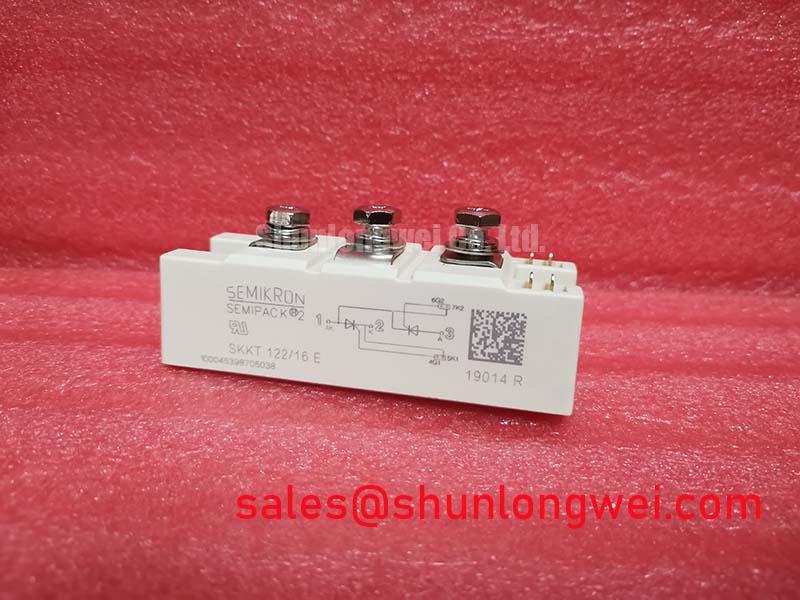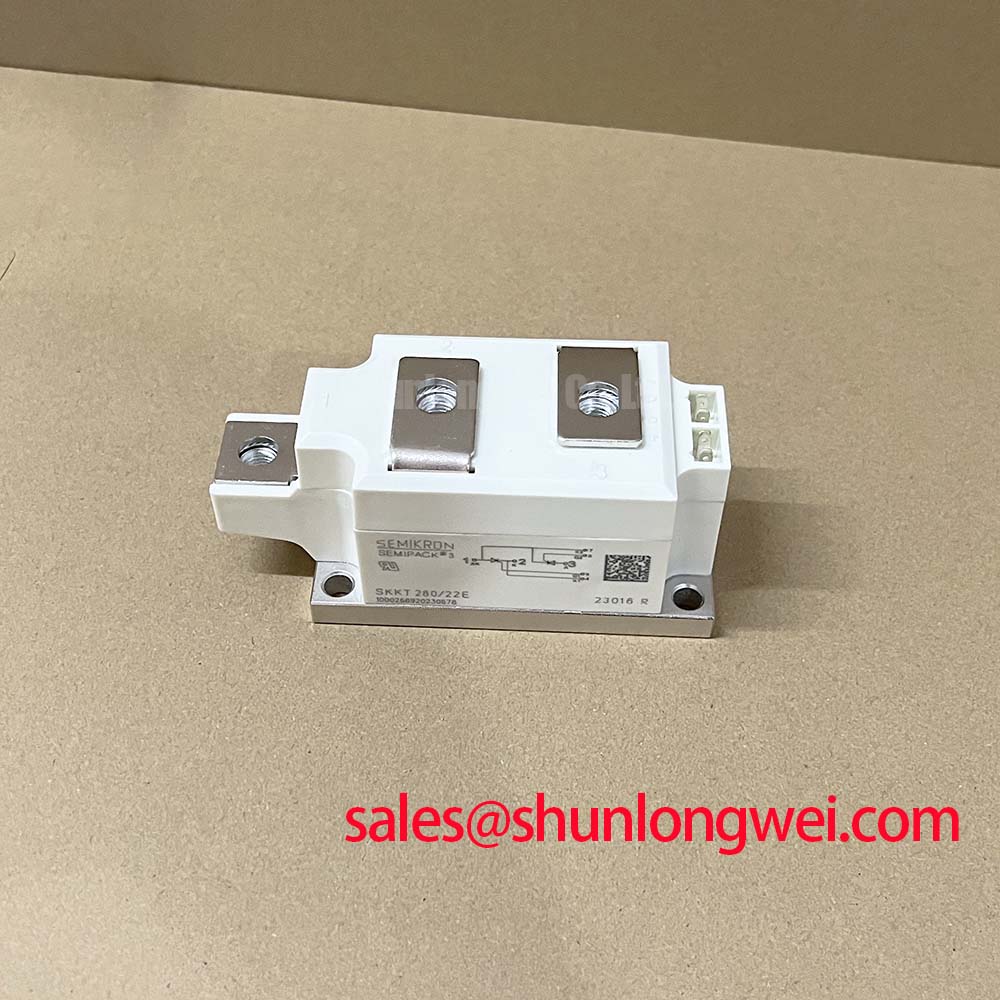Content last revised on November 17, 2025
SKKQ 3000/14E: High-Reliability 3000A AC Thyristor Controller for Demanding Industrial Power Control
Product Overview: Engineering Reliability into High-Power AC Control
A Strategic Component for Maximizing Uptime in Heavy Industrial Systems
The SEMIKRON SKKQ 3000/14E is a three-phase AC Thyristor Controller engineered for exceptional long-term reliability in high-power industrial applications. Its design centers on a robust pressure contact technology, mitigating common failure modes associated with thermal cycling. Key specifications include: 1400V | 3000A | V_T0 ≤ 0.85V. This module offers the core benefits of superior operational lifespan and predictable performance under strenuous load conditions. For engineers designing systems like industrial motor soft starters, the critical question is how to handle massive inrush currents without compromising component longevity; the SKKQ 3000/14E's high surge current capability provides a direct and robust answer. This focus on durability makes it the optimal choice for high-current AC control systems where operational reliability is a primary design driver.
Application Scenarios & Value
System-Level Benefits in Industrial Motor Drives and Heating
The SKKQ 3000/14E is engineered for environments where power control integrity is non-negotiable. Its primary value is demonstrated in applications subjected to frequent power cycling and high inrush currents, where standard soldered modules can become a reliability bottleneck.
A high-fidelity engineering scenario is the integration of this module into a large-scale AC Motor Soft Starter for conveyor systems in mining or logistics. During motor startup, the controller must manage immense transient currents. The SKKQ 3000/14E’s substantial surge current rating (I_TSM) allows it to absorb these transients repeatedly without degradation. This prevents premature failures that could halt an entire production line. The core engineering benefit is the transition from a reactive maintenance model to a predictive one, enabled by the module's inherent robustness derived from its pressure contact design. Other key applications include:
- Large-scale resistive heating control for industrial furnaces and dryers.
- High-power light dimming systems used in stage and studio applications.
- Static VAR compensators for power factor correction in industrial grids.
For systems requiring a lower current rating but the same robust design principles, the related SKKQ 1500/14E offers a similar voltage class with a 1500A capacity.
Key Parameter Overview
Decoding Specifications for Enhanced System Reliability
The technical specifications of the SKKQ 3000/14E are tailored for high-power AC control, with a clear emphasis on durability and safe operation. The following table highlights key parameters and their direct engineering implications.
| Parameter | Value | Engineering Significance & Value |
|---|---|---|
| Repetitive Peak Off-State Voltage, V_DRM / V_RRM | 1400 V | Provides a significant safety margin for operation on industrial 400V/480V mains, ensuring reliable blocking capability against line voltage transients. |
| RMS On-State Current, I_TRMS | 3000 A | This high current handling capacity makes it suitable for controlling extremely heavy loads, such as multi-megawatt motors or large industrial heating elements. |
| Surge On-State Current, I_TSM (10 ms, 50 Hz) | 35000 A | Critical for survivability. It signifies the module's ability to withstand the severe inrush currents typical of motor starts or transformer energization without failure. |
| Thermal Resistance, Junction to Case, R_th(j-c) | ≤ 0.0075 °C/W | An extremely low thermal resistance indicates highly efficient heat transfer from the silicon chip to the heatsink, simplifying thermal management and allowing for higher power density. |
| Isolation Voltage, V_isol (AC, 1 min.) | 4000 V | Ensures robust electrical isolation between the power circuit and the mounting baseplate, a fundamental safety requirement in industrial equipment design. |
Download the SKKQ 3000/14E datasheet for detailed specifications and performance curves.
Technical Deep Dive
The Engineering Advantage of Pressure Contact Technology
A defining feature of the SKKQ 3000/14E is its use of pressure contact technology. Unlike conventional power modules that rely on large-area solder joints to connect the silicon die to the baseplate, this design uses a precisely calibrated clamping force. Think of it like a high-performance engine head gasket: instead of a permanent bond (solder), it uses immense, uniform pressure to create a reliable electrical and thermal connection.
This seemingly simple change has profound implications for long-term reliability. Solder layers are prone to fatigue and cracking after thousands of temperature cycles—the expansion and contraction from heating during on-states and cooling during off-states. These micro-cracks increase thermal resistance, causing the chip to run hotter and eventually leading to catastrophic failure. Pressure contact technology completely sidesteps this failure mechanism. The absence of solder makes the module exceptionally resilient to the thermal stresses inherent in applications like motor soft starters and resistive heating control. This results in a significantly extended operational lifetime and a more predictable failure-in-time (FIT) rate, which is a critical metric for any engineer focused on total cost of ownership (TCO).
Frequently Asked Questions (FAQ)
What is the primary benefit of the pressure contact design in the SKKQ 3000/14E?
Its main advantage is enhanced long-term reliability and an extended operational lifespan. By eliminating solder layers, it becomes highly resistant to fatigue failures caused by thermal cycling, a common issue in high-power applications.
How does the V_isol of 4000V impact system design?
This high isolation voltage provides a robust safety barrier, simplifying the design of insulation systems and helping ensure the final equipment complies with stringent industrial safety standards like IEC 61800-5-1.
Is this module suitable for controlling inductive loads like large motors?
Yes, it is exceptionally well-suited for such applications. Its high surge current (I_TSM) rating of 35 kA allows it to safely manage the significant inrush currents associated with starting large inductive motors.
What does the low R_th(j-c) value of 0.0075 °C/W mean for thermal management?
This extremely low thermal resistance signifies very efficient heat dissipation from the thyristor junction to the module's case. For a system designer, this translates into the ability to use a smaller, more cost-effective heatsink or to operate at higher ambient temperatures without exceeding the maximum junction temperature.
Can the SKKQ 3000/14E be used for phase-angle control?
Absolutely. As a thyristor-based AC controller, it is designed for mains frequency applications, including phase-angle control for adjusting power delivered to resistive loads (like heaters) or for the smooth acceleration of AC motors in soft starter configurations.
An Engineer's Perspective on Component Selection
From a design engineering standpoint, selecting the SKKQ 3000/14E is a strategic decision that prioritizes system uptime over minimal initial component cost. Its architecture directly addresses the most common wear-out mechanism in high-power modules: solder fatigue. In applications where a single component failure can lead to tens of thousands of dollars in lost production, the robustness afforded by its pressure contact design provides a compelling argument. This module is not just a high-current switch; it is an investment in the long-term operational integrity of the entire power system. To explore the foundational principles of these essential components, consider this in-depth analysis of power modules.

